Introducing a new dog to the family can be an exciting experience, but it can also be a challenging one. Dogs are social animals and thrive on companionship, but getting two dogs to like each other is not always easy. Whether you are introducing a new dog to your current pet or trying to help your dog get along with other dogs, there are steps you can take to make the process smoother.
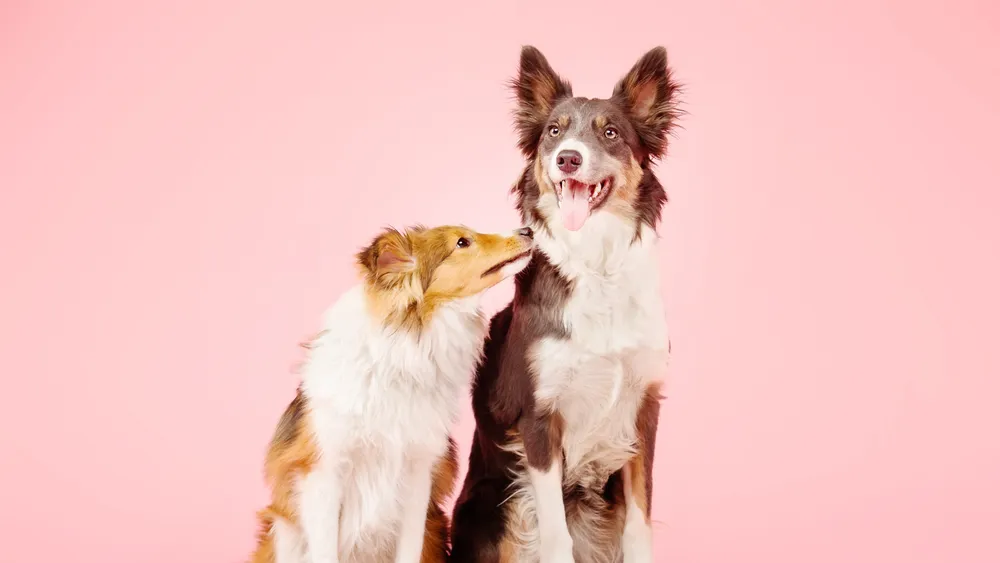
The first step in getting dogs to like each other is to introduce them properly. It is important to introduce the dogs on neutral ground, such as a park or a friend’s backyard. This will help prevent territorial behavior from either dog. It is also important to introduce the dogs one at a time, allowing them to sniff and get to know each other slowly. Keep the leashes loose and allow the dogs to interact naturally. If either dog shows signs of aggression or discomfort, separate them immediately and try again another time.
Once the dogs have been introduced, it is important to establish a routine and set boundaries. Dogs thrive on structure and routine, so it is important to establish a feeding, exercise, and play schedule. It is also important to set boundaries for both dogs, such as where they can and cannot go in the house, and what toys or objects are off-limits. By establishing a routine and setting boundaries, you can help prevent jealousy and territorial behavior, which can lead to fights or aggression.

Understanding Dog Behavior
Dogs are social creatures and thrive on interaction with other dogs and humans. However, introducing two dogs to each other can be a challenging task. Understanding dog behavior is essential to ensure a successful introduction and a harmonious relationship between dogs.
Body Language and Signs of Tension
Dogs communicate mostly through body language, and understanding their body language is crucial to avoid misunderstandings and conflicts. When dogs meet, they will communicate through various body signals, including tail wagging, ear position, and body posture. Signs of tension include growling, baring teeth, and raised hackles. It is essential to learn to read these signals to prevent any aggressive behavior.
Aggression and Fear Factors
Aggression in dogs can be caused by various factors, including fear, anxiety, or territorial behavior. Fear aggression is a common issue in dogs and can be triggered by new situations or unfamiliar dogs. Territorial aggression is when a dog perceives another dog as a threat to its territory. Owners must identify the underlying cause of aggression and address it accordingly.
Socialization and Personality Traits
Socialization is a critical factor in a dog's behavior and personality development. Dogs that are well-socialized are more likely to be friendly and confident around other dogs. However, dogs with dominant personalities may be more prone to aggressive behavior towards other dogs. It is crucial to understand each dog's personality traits and socialization history before introducing them to new dogs.
In conclusion, understanding dog behavior is essential to ensure a successful introduction and a harmonious relationship between dogs. Owners must learn to read their dog's body language, identify the underlying cause of aggression, and understand each dog's personality traits and socialization history. By doing so, owners can create a safe and comfortable environment for their dogs and promote positive interactions with other dogs.
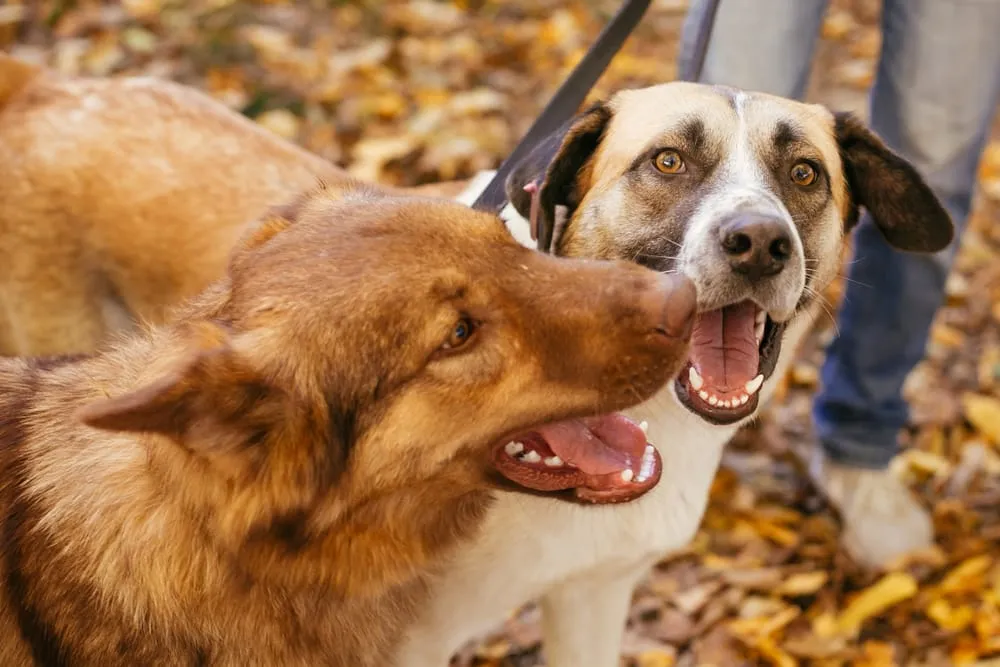
Preparing for a New Dog
Bringing a new dog into the family can be an exciting and rewarding experience. However, introducing a new dog to an existing dog can sometimes be a challenge. Proper preparation is key to ensuring a smooth transition and a happy household. Here are some things to consider when preparing for a new dog.
Selecting Compatible Breeds
When selecting a new dog, it's important to consider the breed and temperament of both dogs. Some breeds are known to be more compatible with others, and some may be more dominant or territorial. It's important to research breeds and choose one that is known to be compatible with your existing dog's breed and temperament.
Assessing Age and Size Compatibility
Age and size are also important factors to consider when introducing a new dog to an existing dog. It's generally easier to introduce a puppy to an adult dog, as puppies are less threatening and more adaptable. However, if both dogs are adults, it's important to consider their size and energy levels. A larger, more energetic dog may not be compatible with a smaller, more timid dog.
Health and Vaccinations
Before introducing a new dog to an existing dog, it's important to ensure that both dogs are healthy and up-to-date on their vaccinations. A sick dog can be a source of stress for both dogs, and an unvaccinated dog can pose a risk to the health of the other dog. It's important to consult with a veterinarian and ensure that both dogs are healthy and vaccinated before introducing them.
By taking the time to properly prepare for a new dog, you can ensure a smooth transition and a happy household. Consider the breed and temperament of both dogs, assess age and size compatibility, and ensure that both dogs are healthy and up-to-date on their vaccinations. With proper preparation, your dogs can become fast friends and enjoy a happy and healthy life together.
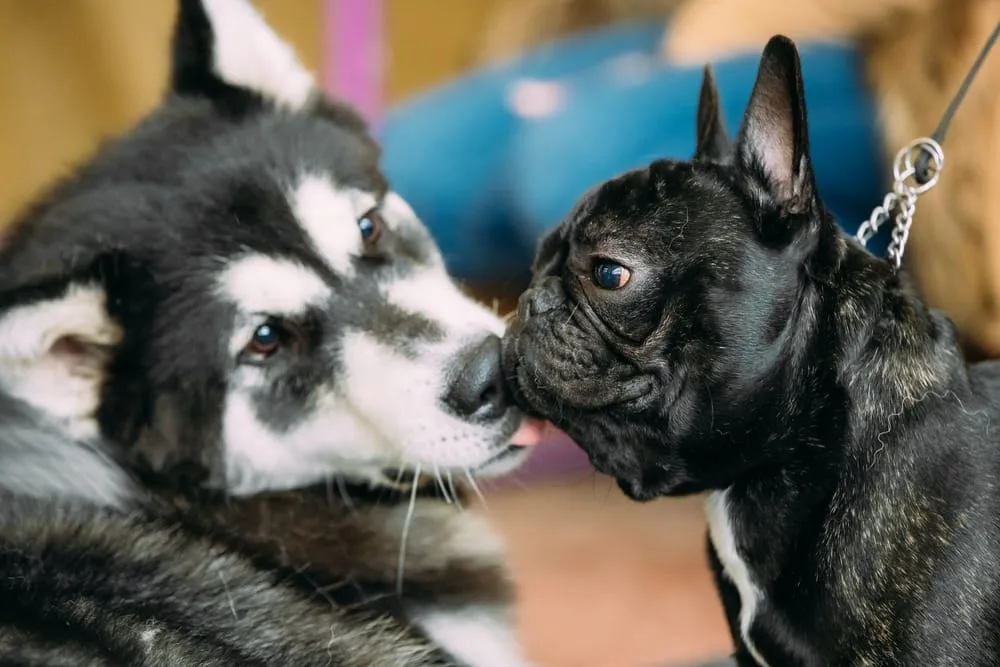
Initial Introductions
Introducing dogs to each other can be a challenging task, especially if they are not familiar with each other. However, with proper planning and management, it is possible to help them get along. The following subsections provide some tips for making the initial introduction process as smooth as possible.
Choosing a Neutral Territory
When introducing two dogs, it is important to choose a neutral territory that is unfamiliar to both dogs. This can help to reduce the likelihood of territorial behavior and aggression. A neutral territory could be a park, a friend's backyard, or any other location that is not associated with either dog.
First Meeting Without Direct Interaction
Before the dogs meet face-to-face, it can be helpful to allow them to become familiar with each other's scent. This can be achieved by swapping blankets or toys between the two dogs. Another option is to take the dogs on a walk together, but keep them at a safe distance from each other.
Supervised Face-to-Face Introduction
When the dogs are ready for their first face-to-face meeting, it is important to supervise the interaction closely. Keep the dogs on a leash and introduce them slowly. Allow them to sniff each other and watch their body language closely. If either dog shows signs of aggression, separate them immediately.
By following these tips, dog owners can help their pets to get along and build a positive relationship. Remember, all dogs are individuals, and some may take longer to warm up to each other than others. Be patient and keep a positive attitude.

Creating Positive Associations
Creating positive associations between dogs is a crucial step in getting them to like each other. By using treats, toys, and play, owners can encourage their dogs to associate each other with positive experiences.
Using Treats and Toys
Using treats and toys during interactions between dogs can help create positive associations. Owners can give treats to both dogs when they are in the same room together or playing together. This can help them associate each other with good things and encourage them to interact positively.
Toys can also be used to create positive associations. Owners can give each dog a toy and encourage them to play with it together. This can help them bond and associate each other with fun and play.
The Role of Humans in Play
Humans can play an important role in creating positive associations between dogs. Owners can supervise playtime and intervene if necessary to prevent any negative interactions. They can also join in on playtime to make it more fun and positive for both dogs.
It's important for owners to remain calm and neutral during interactions between dogs. If an owner becomes anxious or tense, it can escalate any negative interactions between the dogs.
Obedience Training Together
Obedience training can also be a helpful tool in getting dogs to like each other. By training both dogs together, they can learn to work as a team and associate each other with positive experiences.
Owners can start with basic obedience commands such as "sit" and "stay" and gradually work up to more advanced commands. This can help both dogs feel more comfortable around each other and encourage positive interactions.
Overall, creating positive associations between dogs takes time and patience. By using treats, toys, play, and obedience training, owners can encourage their dogs to associate each other with positive experiences and build a strong bond.
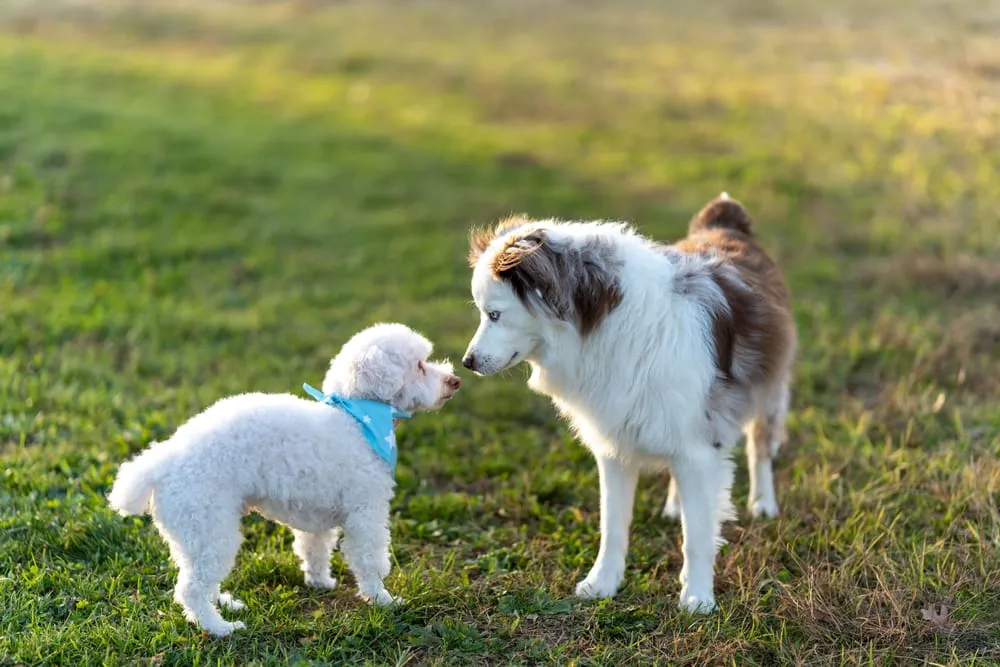
Managing the Dog Environment
When introducing new dogs to each other, it is important to manage their environment to ensure a smooth transition. This means controlling their access to resources and setting boundaries to prevent conflicts. Here are some tips on managing the dog environment:
Feeding and Resource Guarding
Dogs can be possessive of their food and toys, which can lead to aggressive behavior. To prevent this, it is important to feed dogs in separate areas and remove any toys or objects that they may fight over. If a dog shows signs of resource guarding, such as growling or snapping, it is best to consult a professional trainer to address the behavior.
Personal Space and Crates
Dogs need their own personal space where they can feel safe and secure. Providing each dog with their own crate can help them feel more comfortable and prevent conflicts. Crates should be large enough for the dog to stand up, turn around, and lie down comfortably. If a dog is not used to being in a crate, it is important to introduce it gradually and make it a positive experience.
Setting Boundaries with Baby Gates
Baby gates can be used to create boundaries between dogs and prevent them from entering certain areas of the house. This can be especially helpful when introducing a new dog to the home. It is important to supervise the dogs when they are near the baby gates to prevent any attempts to jump over or push through them.
By managing the dog environment, owners can create a safe and comfortable space for their dogs to interact with each other. It is important to remember that each dog is unique and may require different management techniques. If owners are unsure about how to manage their dogs' behavior, they should consult a professional trainer for guidance.

Ongoing Interaction Strategies
To ensure that dogs continue to get along, ongoing interaction strategies should be implemented. These strategies are designed to promote positive interactions and prevent negative ones.
Regular Walks and Outdoor Activities
One of the most effective ongoing interaction strategies is to ensure that dogs get plenty of exercise and outdoor time. Regular walks and outdoor activities can help to reduce stress and anxiety, which can lead to more positive interactions between dogs. Additionally, outdoor activities can help to provide dogs with new and interesting experiences, which can help to keep them mentally stimulated.
Monitoring and Redirecting Behavior
Another important ongoing interaction strategy is to monitor the behavior of dogs and redirect any negative behavior. This can involve keeping a close eye on dogs when they are interacting and intervening if necessary. For example, if one dog starts to display aggressive behavior towards another dog, the owner can redirect their attention to something else, such as a toy or treat. This can help to prevent the situation from escalating and can encourage positive interactions between the dogs.
Dealing with Setbacks and Aggression
Despite the best efforts of owners, setbacks and aggression can still occur. It is important for owners to be prepared to deal with these situations in a calm and effective manner. This can involve separating the dogs and giving them time to calm down, as well as seeking the advice of a professional dog trainer or behaviorist. It is important to remember that aggression is often a result of fear or anxiety, and that punishing a dog for aggressive behavior can actually make the situation worse.
Overall, ongoing interaction strategies are essential for ensuring that dogs get along. By providing dogs with plenty of exercise and outdoor time, monitoring their behavior, and dealing with setbacks and aggression in a calm and effective manner, owners can help to promote positive interactions between dogs and prevent negative ones.
Advanced Tips and Considerations
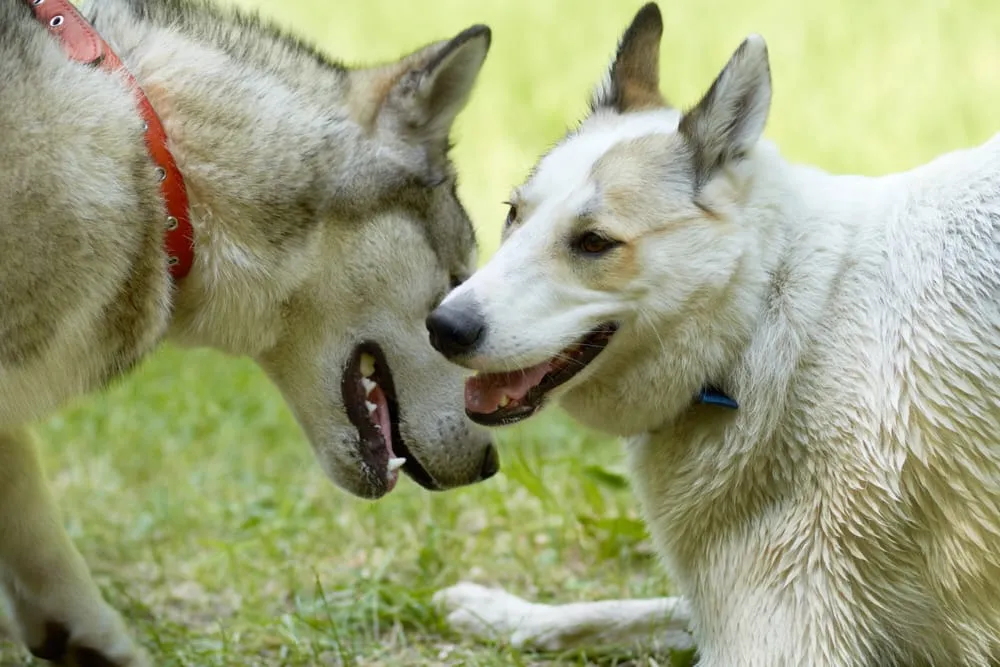
When to Consult a Professional Trainer
In some cases, introducing a new dog to your household can be a complicated process that requires the help of a professional trainer. If you have any concerns about the process or are unsure about how to proceed, it may be a good idea to consult with a trainer who has experience in this area. They can provide guidance on how to introduce the dogs properly and help you manage any issues that may arise.
Understanding Long-Term Dynamics
It's important to understand that introducing a new dog to your household can have long-term effects on the dynamics of your existing dogs. While most dogs will eventually learn to get along, there may be some initial tension and it may take time for them to establish a hierarchy and bond. It's important to be patient and monitor their interactions to ensure that they are progressing positively.
Introducing a Second or Third Dog
Introducing a second or third dog to your household can be more challenging than introducing a single dog. It's important to ensure that each dog has their own space and resources, such as food bowls and toys, to prevent any potential conflicts. Additionally, you should introduce each dog separately and monitor their interactions closely to ensure that they are getting along.
Overall, introducing a new dog to your household can be a rewarding experience for both you and your dogs. By following these advanced tips and considerations, you can help ensure a smooth and successful introduction.

Conclusion
In conclusion, introducing dogs to each other can be a challenging process that requires patience and a calm demeanor. Positive reinforcement is key to helping dogs develop a bond and learn to like each other.
It's important to remember that each dog has its own personality and may require different approaches. Some dogs may take longer to warm up to each other, while others may immediately become best friends.
Showing love and affection to each dog can also help them feel more comfortable and trusting of each other. It's important to avoid showing favoritism or giving one dog more attention than the other.
By following these tips and remaining patient, owners can successfully introduce their dogs to each other and foster a happy and healthy relationship between them.




